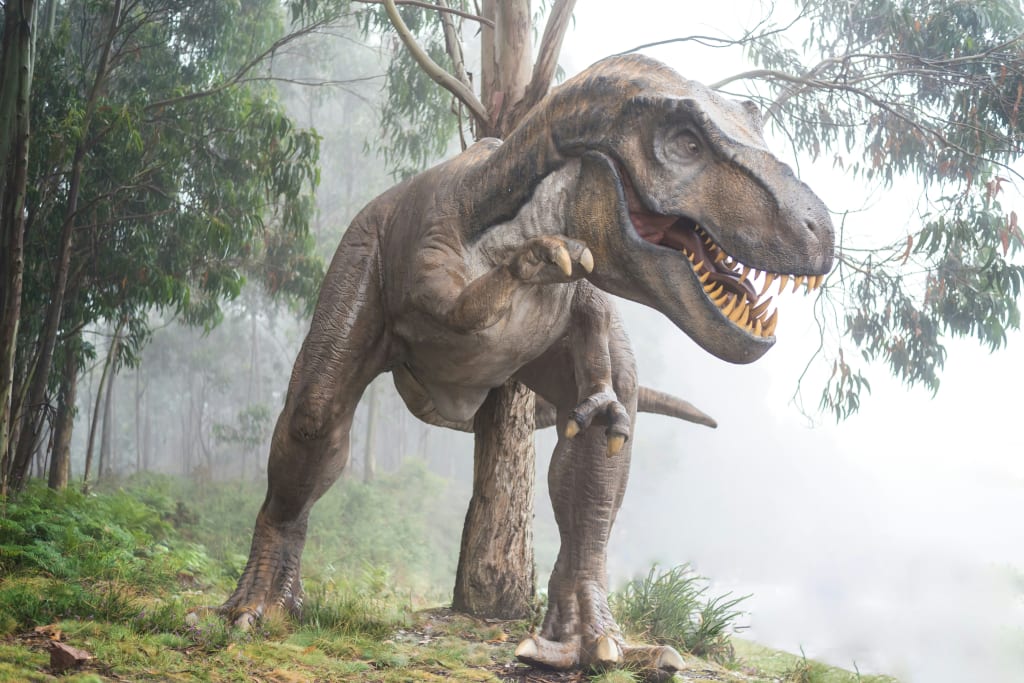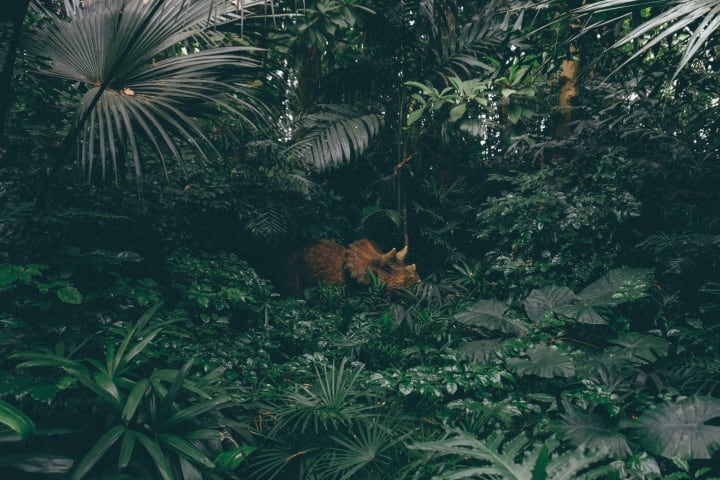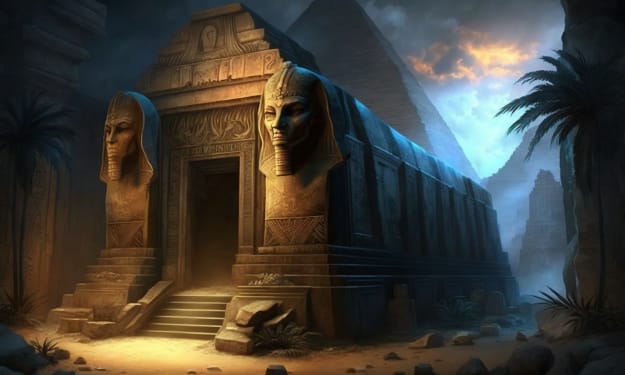Imagine dinosaurs roaming the earth again. What is it like?
Introduction

The world is full of dinosaurs. They're everywhere, in all sorts of weird places. You've probably seen them in the movies or on TV, but have you ever wondered what they actually look like? Or how they act? Or even where they live? Well, here's your chance! This article will tell you everything you need to know about dinosaurs: where they roam free and why we're still fascinated by them today.
There are more dinosaurs than ever before.
As you didn't already know, dinosaurs roamed the earth for millions of years before humans were even around. They've been extinct for a long time now, but there are still plenty of them out there!
If you look at your local zoo or even on TV, you may think that dinosaurs are all just imaginary creatures. But they're not! You can see real live dinosaurs in museums and zoos all around the world - so go ahead and take the time to visit one near your house or apartment building!
You might think that dinosaurs are just a thing of the past, but they are not. In fact, there are still many different kinds of dinosaurs roaming around today! You can see them in zoos and museums all over the world - so go ahead and take some time to visit one near your home or apartment building!
Dinosaurs roam free again.
You’re sitting on a park bench, watching the children play. They are all dinosaurs: giant lizards who roam the earth freely and without constraint. You see them in their natural habitat—riding around on tricycles or running through fields of flowers—and you can tell that they are happy to be back home after years away from their homeland.
Dinosaurs have not been extinct for thousands of years! In fact, dinosaurs had been roaming around our planet for hundreds of millions of years before we humans even existed as a species (though some palaeontologists believe that there may have been humans living alongside animals much earlier than this).
They were here when we were not, and they will be here long after we are gone. The dinosaurs are a part of nature, as much as any other animal.
The Great Plains are home to the last of the dinosaurs.
The Great Plains are the last home of the dinosaurs. The epicentre of dinosaur diversity, this region is home to some of the largest creatures ever to walk on Earth. The largest land animal ever known was Ankylosaurus, which stood up to 70 feet tall and weighed 20 tons! There is evidence that these beasts roamed here until around 70 million years ago - when a meteor struck our planet and wiped out all life as we know it... except for those few lucky enough to escape extinction!
You might be thinking: "If these huge creatures lived in such close proximity, why weren't they wiped out by each other?" Well... that's actually pretty great news! It means we have plenty more time left before they become extinct themselves!
So what does this mean for you? Well, it means that if you want to see animals bigger than yourself, we have plenty of them here on Earth! If you're looking for an adventure in a faraway land where dinosaurs roam the plains... well... that's not happening anytime soon. And while it's true that there are still some species of animals out there which are not only huge but also deadly (like snakes), most of those were wiped out by humans when we first started farming and building homes on their territory.
Dinosaurs aren't the same as they used to be.
In fact, dinosaurs have evolved since the Mesozoic Era and have had to adapt to survive in today's world. While many people think of dinosaurs as being big, strong and powerful creatures, this isn't always true. They were actually quite small when compared with their modern counterparts—some could grow up to 10 feet long (3 meters) or more but most did not exceed 6 feet (2 meters). This means that smaller species could outrun larger ones if need be!

So, what are some examples of these smaller dinosaurs? Here's a list of five you should know about: -Coelophysis (“hollow form”) - This was an early dinosaur that lived during the Late Triassic period. It is known from fossil remains in North America and possibly South Africa. Coelophysis is estimated to have grown up to 6 feet long (2 meters) but most scholars believe it was shorter than that since its skull size suggests it had a small brain.
Dinosaurs are not what you think.
Dinosaurs are not what you think. You may have been taught that dinosaurs were all the same and that they all lived in an era when dinosaurs roamed the earth. But this is not true at all! In fact, there were many different types of dinosaurs—some were herbivores; others were carnivores or even omnivores (meaning they ate both plants and animals). There were also some types that grew to sizes larger than modern elephants!
Dinosaurs died out around 65 million years ago (the beginning of the Cretaceous Period). When they did die out though, they left behind hundreds of fossils scattered across continents across Earth's surface today because as we know now this was a time when there was little oxygen in Earth's atmosphere which made breathing difficult for humans who lived at that time period....
In fact, humans didn't even exist yet! Dinosaurs were the dominant species on Earth at that time. But as we know now this was a time when there was little oxygen in Earth's atmosphere which made breathing difficult for humans who lived at that time period.
Dinosaurs are evolving.
In the past, dinosaurs were just a bunch of dumb lumbering beasts that walked around on four legs and had big teeth. But now, they're evolving into something new: smart, social animals that can become mobile and active.
Dinosaurs are adapting to their new environment by changing their diet (they eat plants rather than meat) and by becoming smarter. They've also started moving around more than before—a sign that they want to spend more time outside on the grass!
In other words, dinosaurs are becoming more like animals that live on Earth today. They're no longer just big lizards that sit around in the jungle with nothing to do all day!
The dinosaurs are becoming more like animals that live on Earth today. They're no longer just big lizards that sit around in the jungle with nothing to do all day! In other words, dinosaurs are becoming more like animals that live on Earth today. They're no longer just big lizards that sit around in the jungle with nothing to do all day!
In other words, dinosaurs are becoming more like animals that live on Earth today. They're no longer just big lizards that sit around in the jungle with nothing to do all day! In other words, dinosaurs are becoming more like animals that live on Earth today. They're no longer just big lizards that sit around in the jungle with nothing to do all day!
We know that dinosaurs aren’t what you think. They aren’t the same as they used to be and they are evolving into something new. We have discovered fossils of dinosaurs roaming free on the Great Plains and even the last of their kind living in the rainforests of South America. Their bones have been found all over the world, but how did this happen? What happened when we wiped out these creatures 50 million years ago? Were they able to adapt or were they completely wiped out by some catastrophe? No one knows, but one thing is clear: they will live on forever in our imagination.
About the Creator
Nipun M. Wijerathne
Hello! I’m a creative writer, and I love it. I write creative fiction & mysteries of my own making. When I’m not writing, you’ll find me reading and watching.
Enjoyed the story? Support the Creator.
Subscribe for free to receive all their stories in your feed. You could also pledge your support or give them a one-off tip, letting them know you appreciate their work.






Comments
There are no comments for this story
Be the first to respond and start the conversation.